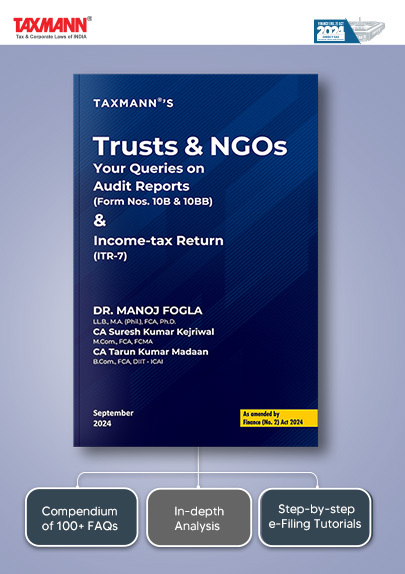Revenue can’t retain TDS; credit is to be given to deductee or person with assessable income: ITAT
- Blog|News|Income Tax|
- 2 Min Read
- By Taxmann
- |
- Last Updated on 13 January, 2023
Case Details: Hampi Expressways (P.) Ltd. v. DCIT - [2023] 146 taxmann.com 24 (Mumbai-Trib.)
Judiciary and Counsel Details
-
- M. Balaganesh, Accountant Member & Rahul Chaudhary, Judicial Member
- M.M. Golvala & Amey Wagle for the Appellant.
- Tejinder Pal Singh for the Respondent.
Facts of the Case
The assessee entered into a contract with the National Highway Authority of India (NHAI) for the construction of a national highway and was responsible for shifting utilities. The assessee appointed a sub-contractor for carrying out the said utility shifting work. It had claimed credit of a certain sum being tax deducted at source by NHAI.
The Assessing Officer (AO) held that the assessee had failed to offer corresponding income to tax during the relevant assessment year. Thus, it was not entitled to claim credit of tax deducted at source in terms of section 199 read with rule 37BA.
On appeal, the CIT(A) upheld the order of AO. Aggrieved-assessee filed the instant appeal before the Tribunal.
ITAT Held
The Mumbai Tribunal held that AO’s objection to the assessee claiming credit for taxes that were withheld was because the corresponding income had not been reported in the financial statements and therefore not offered for tax.
However, the assessee argued that there was a back-to-back arrangement with a subcontractor and that all the income was passed on to the subcontractor, resulting in no income to report. The assessee had provided a separate ledger showing income received from another entity (NHAI) and corresponding payments to the subcontractor.
AO isn’t allowed to retain tax deducted at the source without credit being available to anybody. Therefore, either the deductee or the person in whose hand income is assessable should be allowed to claim credit of tax deducted at source by granting purposive interpretation of the provisions of Section 199 and Rule 37BA.
Therefore, AO was to be directed to verify receipts and deducibility of corresponding payments reflected in the ledger account of the assessee and allow the claim of credit.
List of Cases Reviewed
-
- CIT v. Bhooratnam & Co. [2013] 29 taxmann.com 275/216 Taxman 6/357 ITR 396/262 CTR 405 (AP) (para 9.6) followed.
List of Cases Referred to
-
- CIT v. Bhooratnam & Co. [2013] 29 taxmann.com 275/216 Taxman 6/357 ITR 396/262 CTR 405 (AP) (para 7)
- CIT v. Relcom [2015] 62 taxmann.com 190/234 Taxman 693/28 CTR 102 (Delhi) (para 7)
- IVRCL-KBL (JV) v. Asstt. CIT [2016] 67 taxmann.com 224/239 Taxman 152/386 ITR 564/289 CTR 111 (AP) (para 7)
- Supreme Renewable Energy Ltd. v. ITO [2010] 124 ITD 394 (Chennai) (para 7)
- Escorts Ltd. v. Dy. CIT [2007] 15 SOT 368 (Delhi) (para 7).
Disclaimer: The content/information published on the website is only for general information of the user and shall not be construed as legal advice. While the Taxmann has exercised reasonable efforts to ensure the veracity of information/content published, Taxmann shall be under no liability in any manner whatsoever for incorrect information, if any.

Taxmann Publications has a dedicated in-house Research & Editorial Team. This team consists of a team of Chartered Accountants, Company Secretaries, and Lawyers. This team works under the guidance and supervision of editor-in-chief Mr Rakesh Bhargava.
The Research and Editorial Team is responsible for developing reliable and accurate content for the readers. The team follows the six-sigma approach to achieve the benchmark of zero error in its publications and research platforms. The team ensures that the following publication guidelines are thoroughly followed while developing the content:
- The statutory material is obtained only from the authorized and reliable sources
- All the latest developments in the judicial and legislative fields are covered
- Prepare the analytical write-ups on current, controversial, and important issues to help the readers to understand the concept and its implications
- Every content published by Taxmann is complete, accurate and lucid
- All evidence-based statements are supported with proper reference to Section, Circular No., Notification No. or citations
- The golden rules of grammar, style and consistency are thoroughly followed
- Font and size that’s easy to read and remain consistent across all imprint and digital publications are applied






 CA | CS | CMA
CA | CS | CMA


